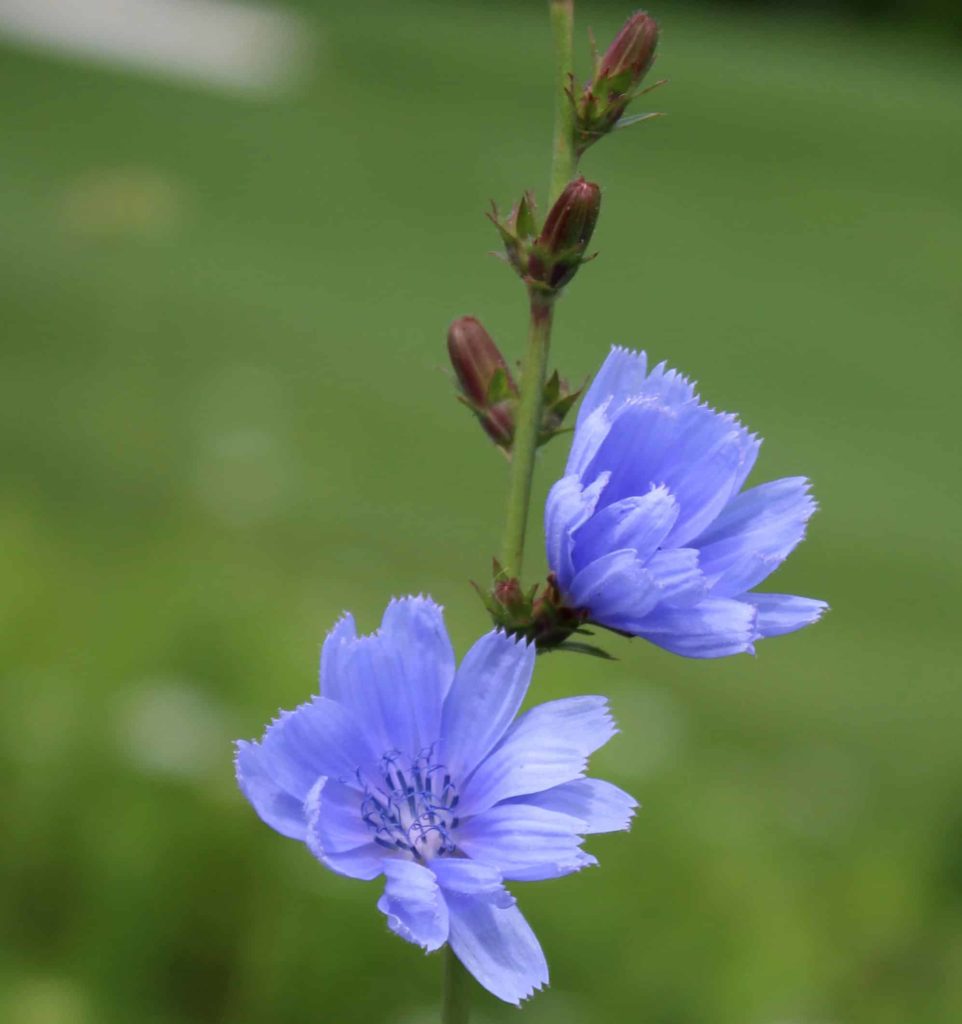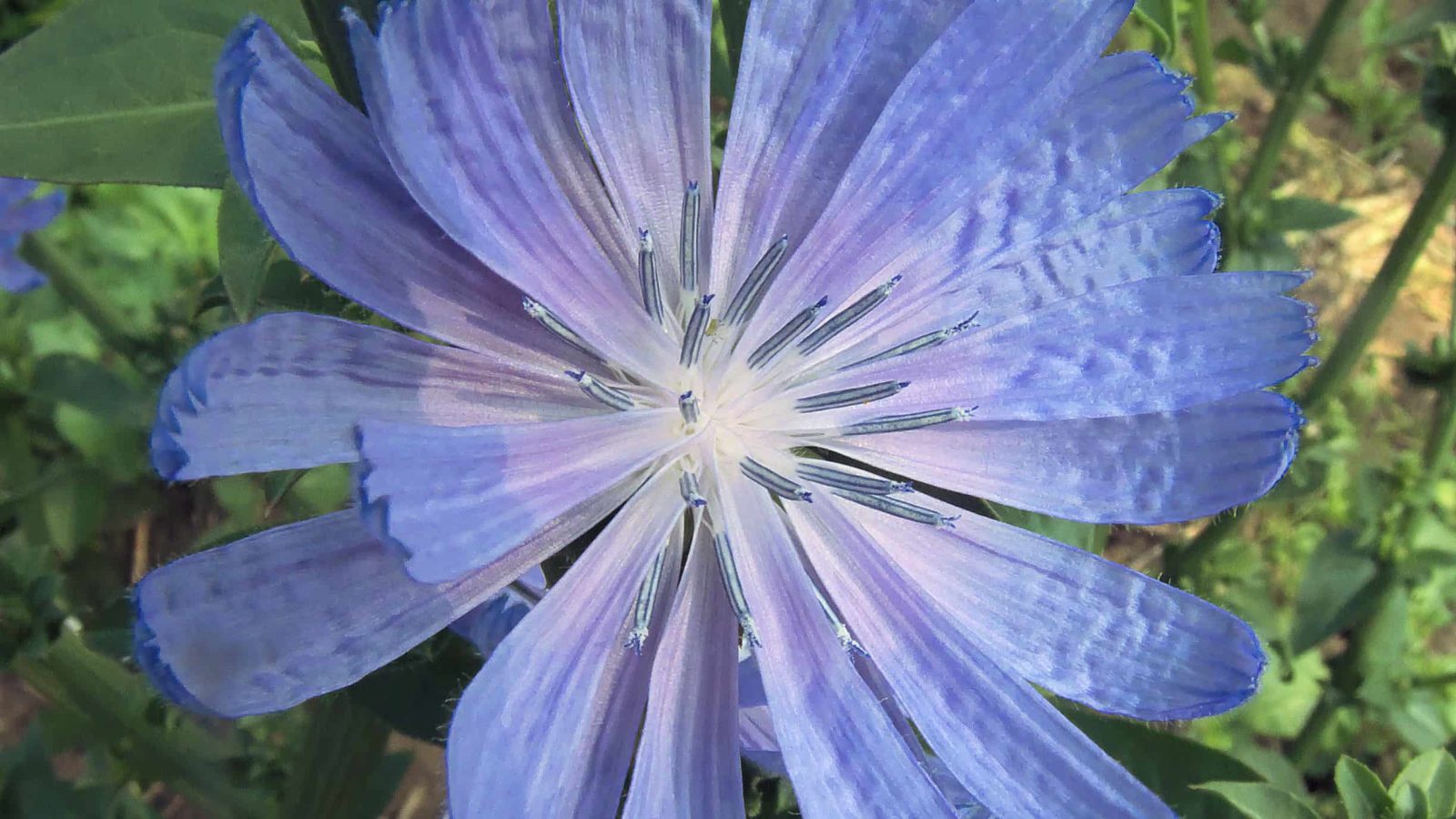Berkshire naturalist Thom Smith finds late-summer wildflowers in the fields.
A quick glance along August roadsides will immediately reveal white flowers, yellow flowers, pink flowers, orange flowers, all intense, and competing for the attention of pollinating insects of all shapes, sizes and descriptions. Among them grows a purple-blue blossom with fine serrations on the ends of its petals.
“Chicory is frustrating to find. It’s there one morning, and later that day it isn’t,” a reader last of my nature column in New England Newspapers wrote one day in a recent August. “I look the next day and it’s nowhere to be found, but on the third day it’s back again. What’s up?”
My answer is short and simple. Chicory flowers, also called Succory, open with the rising sun, and by mid-day, when the sun is at its zenith and most intense, they close; on cloudy days, they won’t open at all. Each flower lasts only part of one day, but the plant will continue producing new flowers through September and into October.


Since the Bronze Age, man, wild animals and livestock have eaten chicory shoots and leaves, and it has followed civilizations through Europe and across the seas.
It is an ancient food source. Horace (65 B.C – 8 BC), the Roman lyric poet, satirist, and critic, mentions its leaves as part of his frugal fare, while Pliny the Elder (23 AD – 79), the Roman author, naturalist and natural philosopher, remarked upon the importance of the plant to the Egyptians who used it in great quantities.
And it is still a staple. “Barbe de Capucins,” a French salad, caught my eye while looking for chicory recipes other than those found in wild edible food books. I found that throughout Europe Chichorium intybus has long been a favorite in salads, and it has not only found favor in France. In the last Century and now, it was and still is a favorite in much of the Mediterranean region and beyond.
I found recipes for chicory salad in Italy, Spain, Greece, Germany, Great Britain and Poland, where I became convinced it is cosmopolitan attraction, mostly limited by availability. So, it stands to reason it would have been introduced to the Americas by early settlers. And since those earlier days it has spread throughout the land.
I have tried it as a substitute for coffee and found it best when mixed with ground coffee bean, and I have eaten it as as a salad, which was bitter. But then I never tried its springtime basal leaves and soft shoots, which are reported to be delicious.
It is delightful to take a morning walk with the gentle blue of the short-lived chicory blossom. I know that I’ll miss its smile on cloudy days.

